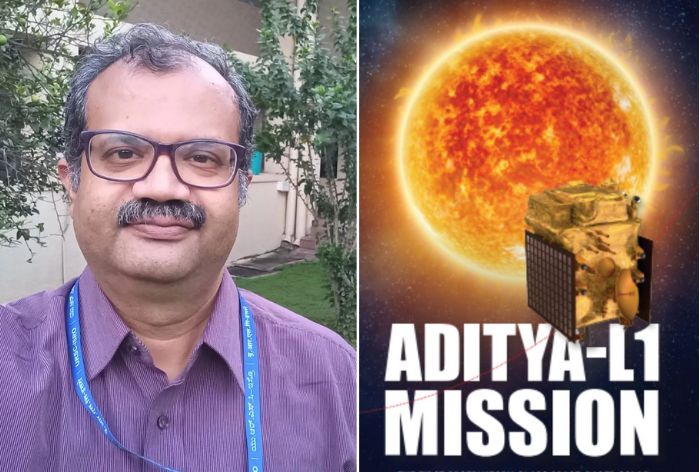Aditya-L1 Mission, India’s first Solar Mission has been successfully launched by ISRO from the Satish Dhawan Space Centre, Sriharikota. On this historic occasion, meet Dr. Sankarasubramanian K, the Head Scientist of this mission; know about his educational qualifications..

New Delhi: Aditya-L1 Mission was scheduled to be launched today, September 2, 2023 at 11:50 AM IST from the Satish Dhawan Space Centre, Sriharikota. India’s first solar mission has been successfully launched by the Indian Space Research Organisation (ISRO) today and the spacecraft is slated to reach its destination in about 125 days. The spacecraft has been sent to space with a total of seven payloads to study the Sun and will be placed in a halo orbit around the Lagrange Point 1 (L1) the sun-earth system; which is about 1.5 million km away from the earth. As Aditya-L1 takes off, meet Dr. Sankarasubramanian K, the scientist responsible for Aditya-L1 Mission. Who is the Main Man Behind Aditya-L1 Mission, what are his educational qualifications and what are the main objectives of India’s first solar mission, read more to know..
Meet Dr. Sankarasubramanian K, The Principal Scientist Of Aditya-L1 Mission
As mentioned before, the ‘Main Man’, the Principal Scientist behind the Aditya-L1 Mission is Dr. Sankarasubramanian K. The chief scientist of this mission is also the Principal Investigator for one of the X-Ray payloads which are onboard the Aditya-L1. Dr. Sankarasubramanian K is also heading the Aditya-L1 Science Working Group, which includes members from different institutes of India that are engaged in solar science research.
Dr. Sankarasubramanian K: Educational Qualifications
According to the ISRO website, Dr. Sankarasubramanian K is a senior solar scientist at the UR Rao Satellite Centre (URSC), Bengaluru. Dr. Sankarasubramanian K obtained his PhD in Physics from Bangalore University through the Indian Institute of Astrophysics, Bengaluru and his research areas of interest are Solar Magnetic Field, Optics and Instrumentation. Aditya-L1 Mission’s Chief Scientist has also contributed to ISRO’s other missions, namely, AstroSat, Chandrayaan-1, Chandrayaan-2 and Chandrayaan-3. Dr. Sankarasubramanian K is currently heading the Space Astronomy Group (SAG) of URSC, which is involved in developing the scientific payloads for the upcoming ISRO Mission of XPoSat.
Aditya L1 Mission: Main Objectives
As mentioned earlier, this is India’s first solar mission and it aims at studying the Sun and will be placed in a halo orbit around the Lagrange Point 1 (L1) which in the direction of the Sun, is 1.5 million km away from the Earth. It is expected for the spacecraft to cover its journey in four months as the mission site is about 1.5 million km away from planet earth. From L1, Aditya L1 will be able to observe the Sun without any hindrances from eclipses or occultation; it will allow the ISRO scientists to study the solar activities and the impact they have on space weather in real time. Solar eruptive events will also be understood through this mission.
With the Aditya L1, the scientists will also focus on the study of the physics of solar corona and its heating mechanism, coupling and dynamics of solar atmosphere, solar wind acceleration and distribution, temperature anisotropy and origin of Coronal Mass Ejections (CME).
Aditya L1 Mission: Budget
The cost or budget of India’s first solar mission has not yet been officially released by the Indian Space Research Organisation but according to an old query in Lok Sabha, it was said that the Government had allocated Rs. 378.53 crore for this solar mission and this does not include the launching costs. According to several media reports, the Aditya L1 Mission Budget is approximately Rs. 400 crore which again is extremely cost effective and is lesser than what was spent on the latest historic lunar mission, Chandrayaan-3.
